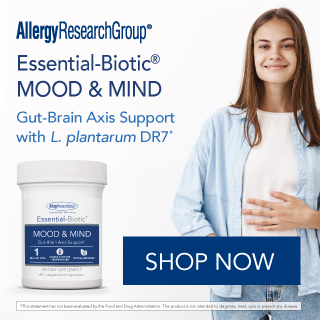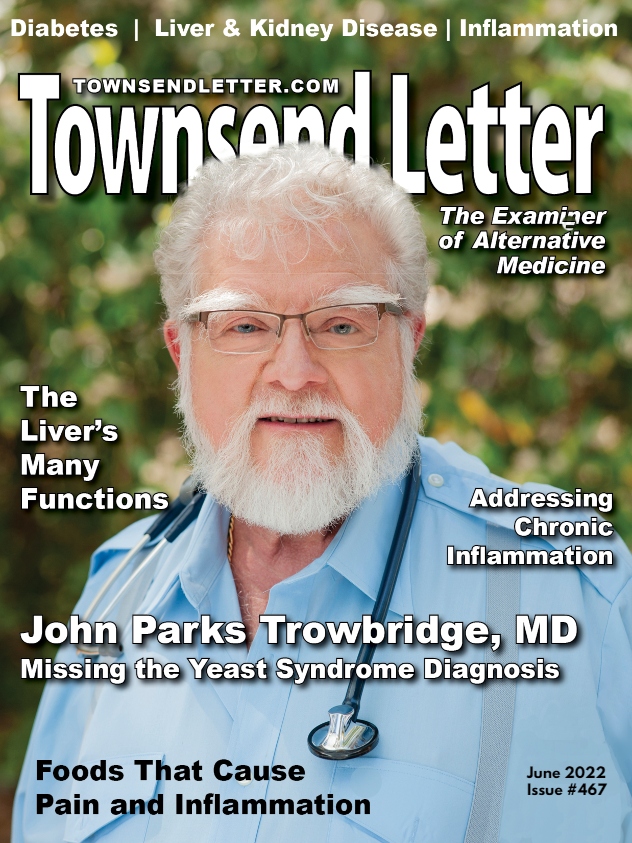By Pamela W. Smith, MD, MPH, MS
I have been blessed to be a physician for 44 years. It is rare in my career that there is a drug that comes out that is a game changer for many patients. Compounded low-dose naltrexone (LDN) is one of those medications.
Naltrexone has traditionally been used for drug overdose. Naltrexone is a reversible competitive antagonist at μ-opioid and κ-opioid receptors, which when used at standard doses of 50 to 150 mg was initially intended for use in opioid and alcohol use disorders.
In recent years, there have been novel and significant findings on the off-label usage of naltrexone in much lower dosage forms for many purposes. The following are some examples.1
- Immune modulator in autoimmune diseases
- Anti-inflammatory
- Chronic pain control
- Weight loss
- Reduction of cytokine storm
Some of the proposed mechanisms of action include blockade of the opioid growth factor receptor (OGFR) axis, which normally stimulates B and T cell proliferation and stimulation of beta-endorphin and enkephalin release, which has anti-inflammatory effects on T and B cells.2 In addition, a study examined how LDN also helped to normalize immune system function.3 Moreover, low-dose naltrexone has shown promise to reduce symptoms related to chronic pain conditions such as fibromyalgia, inflammatory bowel conditions, and multiple sclerosis. The mechanism of action appears to be modulation of neuro-inflammation, specifically, the modulation of the glial cells and the release of inflammatory chemicals in the central nervous system.4 Consequently, LDN has also been shown to be very effective for pain control.5
Low-dose naltrexone has many references in the medical literature concerning its use in different diseases. This exposé will explore the use of LDN in a multitude of medical disorders.
Autoimmune Diseases That Are Not Dermatological Disorders
Consider using LDN for every patient with an autoimmune disease. For example, LDN has been reported to reduce not only self-reported pain in Crohn’s but also lower objective markers of inflammation and disease severity. The response rate of LDN in Crohn’s disease was over 80 % of the participants exhibiting significant improvement in several studies. 6-8 In another study, low-dose naltrexone induced clinical improvement in 74.5%, and remission in 25.5% of patients with inflammatory bowel disease. In addition, LDN directly improved epithelial barrier function by improving wound healing and reducing mucosal endoplasmic reticulum stress levels in yet another trial. The authors concluded that low-dose naltrexone treatment was effective and safe and could be considered for the treatment of refractory IBD patients.9
Low-dose naltrexone has also shown some promise in improving disease severity in multiple sclerosis (MS). LDN significantly improved mental health quality of life indices.10 Moreover, a 17-week randomized, double-blind, placebo-controlled, parallel-group, crossover-design clinical trial was conducted at two universities. A total of 96 adult patients ages 15 to 65 years with relapsing-remitting or secondary progressive clinically definite MS with disease duration longer than six months enrolled into a study. The study clearly illustrates that LDN is a relatively safe therapeutic option.11 Likewise, a trial involving MS patients revealed that the use of LDN resulted in inhibited cell proliferation.12
Rheumatoid arthritis is an additional autoimmune disease that LDN works effectively for. In a trial, in persistent LDN users, there was a 13% relative reduction in daily doses of all medicines and a 23% reduction of analgesics. Specifically, persistent LDN users had significantly reduced daily use of NSAID and opioids, and a lower proportion of users of DMARDs, TNF-alpha antagonists, and opioids. The results support the hypothesis that persistent use of LDN reduced the need for medication used in the treatment of rheumatic and seropositive arthritis.13
The discovery of the widely expressed transient receptor potential melastatin 3 (TRPM3) as a nociceptor channel substantially targeted by certain opioid receptors, and its implication in calcium (Ca2+)-dependent natural killer (NK) cell immune functions has raised the possibility that TRPM3 may be pharmacologically targeted to treat characteristic symptoms of myalgic encephalomyelitis (ME)/chronic fatigue syndrome (CFS). The authors of a study reported that ME/CFS patients taking LDN have restored TRPM3-like ionic currents in NK cells. These data support the hypothesis that LDN may have potential as a treatment for ME/CFS by characterizing the underlying regulatory mechanisms of LDN treatment involving TRPM3 and opioid receptors in NK cells.14
Dermatological Disorders: Both Autoimmune and Non-Autoimmune Related
Dermatology is encountering increasing rates of autoimmune diseases manifesting in primary skin conditions that are difficult to treat without a risk of immunosuppression.
Hailey-Hailey disease, also called benign familial pemphigus, is a late-onset blistering disorder that affects the flexures. There are typically painful erosions and cracks in affected areas. Lesions generally begin between 20 and 40 years of age. Maceration and superinfections are frequent. The lesions are typically distributed symmetrically within intertriginous regions such as the retroauricular folds, lateral aspects of the neck, axillae, umbilicus, inguinal, and perianal regions. The disease is characterized by a chronic relapsing course with spontaneous remissions and multiple recurrences. Severe disease can be very frustrating and have a major psychological and social impact. Low-dose naltrexone has been shown to be an effective therapy.15
Lichen planopilaris is an inflammatory, primary cicatricial alopecia with several different patterns of hair loss. It is considered a follicular variant of lichen planus. Findings suggest that low-dose naltrexone is safe and effective in the treatment of Hailey-Hailey disease and lichen planopilaris. Furthermore, LDN successfully treated the pruritus associated with this and other dermatological disorders.16,17
Likewise, LDN has been shown to improve dermatologic conditions such as systemic sclerosis.18
In addition, a study revealed that the PI3K/AKT/mTOR pathway was significantly inhibited by 1% Naltrexone HCl in XemaTop™, suggesting protein synthesis was affected. The production of IL-6 was inhibited by 70% in drug-treated tissues. The results suggest that this compounded drug is efficacious in down-regulating molecular markers associated with the pathogenesis of psoriasis and provides a basis for a clinical evaluation of 1% Naltrexone HCl in XemaTop™ in psoriasis patients.19 Moreover, a patient with a history of psoriasis was treated with 4.5 mg of LDN during a flare-up. She showed significant improvement in her flare-up and psoriasis remission after only three months of 4.5 mg of LDN nightly.20 In another case report, a 60-year-old white female was successfully treated with LDN for her moderate plaque psoriasis over a six-month period. 21
Guttate psoriasis is aless common form of psoriasis. It manifests with numerous small, teardrop shaped, scaly plaques on the trunk and extremities. The etiology includes both environmental and genetic factors. It commonly arises three to four weeks following a beta hemolytic streptococcal infection. It is more common in children and adolescents than adults.22 LDN has been shown to be beneficial in a case report: 80% improvement was seen in two months.23
Atopic dermatitis is a pruritic, hereditary skin disorder and is the most common form of eczema. The life-time prevalence is 10% to 20% with many cases starting as a baby. Twenty percent to 40% of people continue to have atopic dermatitis as adults.24 A double-blind, placebo-controlled study studied 38 patients with eczema complaining of pruritus. The study found that LDN was more effective than placebo in the treatment of pruritus in patients with eczema.25
As you have seen, LDN likewise works wonderfully topically for itching. The objective of another trial was to correlate the clinical efficacy of topically applied naltrexone in different pruritic skin disorders to a change of epidermal μ-opiate receptor (MOR) expression. The findings supported by the biopsy showed regulation of MOR expression in the epidermis after treatment with topical naltrexone.26
Cancer
Low-dose naltrexone has been shown to be a promising complementary medication for patients with a broad range of medical disorders as already discussed. Although not a proven cure, evidence from clinical trials supports LDN as being a valuable adjunct for disorders in which the immune system plays a centralized role. One of these diseases processes is cancer. Clinical trials have proposed a unique mechanism(s) allowing LDN to affect tumors, including non-small cell lung cancer, at the cellular level by augmenting the immune system.27,28
Moreover, it has been reported that at lower doses naltrexone is able to reduce tumor growth by interfering with cell signaling. Scientists evaluated the gene expression profile of a cancer cell line after treatment with low-dose naltrexone and assessed the effect that adapting treatment schedules with LDN may have on enhancing efficacy. LDN had a selective impact on genes involved with cell cycle regulation and immune modulation. Similarly, the pro-apoptotic genes BAD and BIK1 were increased only after LDN use. Continuous treatment with LDN had little effect on growth in different cell lines; however, altering the treatment schedule to include a phase of culture in the absence of drug following an initial round of LDN treatment, resulted in enhanced cell killing. Furthermore, cells pre-treated with LDN were more sensitive to the cytotoxic effects of a number of common chemotherapy agents. This data supports further the idea that LDN possesses anticancer activity, which can be improved by modifying the treatment schedule.29
Irritable Bowel Syndrome (IBS)
Forty-two IBS patients participated in an open-label study. Global assessment improved in 76% of the patients that used LDN. There were no significant adverse reactions.30
Pain Control
Low-dose naltrexone has been used off-label for treatment of pain and inflammation in multiple sclerosis, Crohn’s disease, fibromyalgia, and other diseases.31 At the low dosage level, naltrexone exhibits paradoxical properties, including analgesia and anti-inflammatory actions, which have not been reported at larger dosages.32-35
The mechanisms by which LDN might relieve pain are not all known. Among the several postulated explanations are that by blocking opioid receptors, LDN provokes a compensatory elevation of endogenous opioids.36,37 In addition, LDN attenuates inflammatory responses by blocking receptors on immune cells.38 It also reduces pro-inflammatory cytokines and superoxides.39-41 These effects appear to be unique at low dosage, compared to FDA-approved dosage for alcohol and opioid dependence.42 When used in doses of 1 to 5 mg, LDN acts as a glial modulator with a neuroprotective effect via inhibition of microglial activation. It also binds to toll-like receptor 4 and acts as an antagonist, therefore inhibiting the downstream cellular signaling pathways that ultimately lead to pro-inflammatory cytokines, therefore reducing inflammatory response. In addition, LDN has been found to be neuroprotective by modulating mitochondrial apoptosis.43
Low-dose naltrexone has been used in many disease processes for pain control.
- One study showed that LDN was an effective therapy for diabetic neuropathy.44
- Another study suggests that the novel TLR4 antagonists naloxone and naltrexone can each fully reverse established neuropathic pain upon multi-day administration.45
- LDN has been shown to be an effective treatment for fibromyalgia.46 LDN reduced fibromyalgia pain significantly greater than placebo in six out of the 10 women. While the pilot study was encouraging, it had limitations such as a single-blind design. To help validate the findings, a second study in 30 women with fibromyalgia was conducted. In that double-blind, crossover, counterbalanced study, 57% of the participants were observed to exhibit a significant (1/3) reduction of pain during LDN. At the end of the LDN treatment, half of the participants reported feeling “much improved” or “very much improved” from LDN.47 Moreover, in a 10-week, single-blind, crossover pilot trial the authors tested the immune effects of eight weeks of oral administration of low-dose naltrexone (LDN). They found that LDN was associated with reduced plasma concentrations of interleukin (IL)-1β, IL-1Ra, IL-2, IL-4, IL-5, IL-6, IL-10, IL-12p40, IL-12p70, IL-15, IL-17A, IL-27, interferon (IFN)-α, transforming growth factor (TGF)-α, TGF-β, tumor necrosis factor (TNF)-α, and granulocyte-colony stimulating factor (G-CSF). They also found a 15% reduction of fibromyalgia-associated pain and an 18% reduction in overall symptoms.48
- In a case report, the patient was a 35-year-old male who had experienced nonspecific left-side chronic low back pain for two years and many therapies had been tried. LDN successfully improved his refractory chronic low back pain.49
- Complex regional pain syndrome (CRPS) is a neuropathic pain syndrome, which involves glial activation and central sensitization in the central nervous system. The authors describe positive outcomes of two CRPS patients, after they were treated with low-dose naltrexone in combination with other CRPS therapies. Prominent CRPS symptoms remitted in these two patients, including dystonic spasms and fixed dystonia (respectively), following treatment with low-dose naltrexone. These patients had previously failed conventional therapies.50
Psychiatric Disorders
Given the proposed dopaminergic mechanism of LDN, researchers examined its efficacy as augmentation for depressive breakthrough on pro-dopaminergic antidepressant regimens. LDN was shown to be beneficial for breakthrough symptoms of major depressive disorders that are already on antidepressants.51
Moreover, since LDN can upregulate endogenous opioid activity, it may also have a role in promoting stress resilience, exercise, social bonding, and emotional well-being, as well as amelioration of psychiatric problems such as autism and depression. It is proposed that LDN can be used effectively as a buffer for a large variety of bodily and mental ailments through its ability to beneficially modulate both the immune system and the brain neurochemistry that regulate positive affect.52
LDN
Low-dose naltrexone refers to daily dosages of naltrexone that are approximately one-tenth of the typical opioid addiction treatment dosage. In most published research, the daily dosage is 4.5 mg with the dose ramped up to this level over a three-week time frame—although the dosage can vary a few milligrams below or above that common value.53-55 Consequently, there are now many dosage forms used for low-dose naltrexone, including ultralow-dose naltrexone. The closely related concept of ultralow-dose naltrexone involves the use of microgram, nanogram, and picogram dosages of naltrexone co-administered with opioid analgesics.56
There are a few possible short-term side effects that may occur with the use of LDN: insomnia, vivid dreams, fatigue, loss of appetite, nausea, hair thinning, mood swings, and mild disorientation. They are usually dose dependent. Consequently, lowering the dose usually resolves the short-term symptoms. Potential long-term side effects include the following: possible liver and kidney toxicity, possible tolerance to the beneficial effects (rebound effect), and other unknown sequelae. Low-dose naltrexone is contraindicated in individuals with acute hepatitis, liver failure, and recent or current opioid use or alcohol abuse. Although, as previously mentioned, ultra-low-dose naltrexone is now being used judiciously if the patient is on a mild narcotic in limited cases.
Clinical Applications
LDN has been used by practitioners world-wide for many disorders. 57
Cardiac Disorders
- Autoimmune cardiomyopathy
- Autoimmune myocarditis
- Autoimmune thrombocytopenic purpura
- Congenital heart block
- Coxsackie myocarditis
- Dressler’s syndrome (post-myocardial infarction syndrome)
- Giant cell myocarditis
- Kawasaki disease
- Polyarteritis nodosa
- Postpericardiotomy syndrome
- Subacute bacterial endocarditis (SBE)
- Vasculitis
Chronic Pain
- Complex regional pain syndrome/RSD
- Diabetic neuropathy
- Migraines
- Peripheral neuropathy
- Temporomandibular joint disorder
Dermatological Disorders
- Alopecia areata
- Alopecia universalis
- Amyopathic dermatomyositis
- Anti-synthetase syndrome
- Atopic allergy
- Atopic dermatitis
- Autoimmune progesterone dermatitis
- Autoimmune urticaria
- Bechet’s syndrome
- Cicatricial pemphigoid
- Cutaneous leukocytoclastic angiitis
- Darier disease
- Dego’s disease (thrombotic vasculopathy)
- Dercum’s disease
- Dermatitis herpetiformis
- Dermatomyositis
- Diffuse cutaneous systemic sclerosis
- Discoid lupus erythematosus
- Erythrodermic psoriasis
- Essential mixed cryoglobulinemia
- Familial cold autoinflammatory syndrome (FCAS)
- Frontal fibrosing alopecia (FFA)
- Hailey-Hailey disease
- Herpes gestationis/pemphigoid gestationis (PG)
- Hidradenitis suppurativa (HS) (acne inversa)
- Lichen planus
- Lichen sclerosus
- Morphea Mucha-Habermann disease, PLEVA (pityriasis lichenoides et varioliformisacuta)
- Myositis
- Neonatal lupus
- Parry Romberg syndrome
- Pemphigus vulgaris
- POEMS syndrome
- Progesterone dermatitis
- Psoriasis
- Pyoderma gangrenosum
- Benign mucosal pemphigoid
- Blau syndrome
- Bullous pemphigoid
- Eczema
- Epidermolysis bullosa acquisita
- Erythema nodosum
- Linear IgA disease (LAD)
- Majeed syndrome
- Schnitzler syndrome
- Subacute cutaneous lupus erythematosus (SCLE)
- Sweet’s syndrome
- Vitiligo
- Vogt-Koyanagi-Harada Disease
- Linear IgA disease (LAD)
- Majeed syndrome
- Kawasaki disease
- Schulman disease
Ear, Nose, Sinus, and Throat
- Autoimmune inner ear disease (AIED)
- Churg-Strauss syndrome
- Cogan syndrome
- Meniere’s disease
- Susac’s syndrome
Endocrine Disorders
- Addison’s disease
- Autoimmune polyendocrine syndrome
- Cushing’s syndrome
- Diabetes mellitus type 1
- Diabetes mellitus type 2
- Eosinophilic esophagitis (EoE)
- Glycogen storage disorder (GSD VII)
- Graves’ disease
- Hashimoto’s thyroiditis
- Hypoglycemia
- Hypopituitary or secondary adrenal insufficiency
- Hypothalamic dysfunction
- Hypothyroidism
- Juvenile diabetes (Type 1 diabetes)
- Ord’s thyroiditis
- Pituitary dysfunction
- POEMS syndrome
- Polyglandular syndromes type I, II, III
- Schmidt syndrome
- Thyroid eye disease (TED)
- Thyroiditis
Gastrointestinal Disorders
- Autoimmune hepatitis
- Autoimmune enteropathy
- Autoimmune pancreatitis
- Celiac disease
- Churg-Strauss syndrome
- Crohn’s disease
- Eosinophilic gastroenteritis
- Gastritis
- Gastrointestinal pemphigoid
- Gastroparesis
- Gluten sensitivity
- Gut dysbiosis
- Inflammatory bowel disease (IBD)
- Irritable bowel syndrome (IBS)
- Lupoid hepatitis
- Nonalcoholic steatohepatitis (NASH)
- Mesenteric Panniculitis
- POEMS syndrome
- Polyarteritis nodosa
- Primary biliary cirrhosis
- Primary sclerosing cholangitis
- Pyoderma gangrenosum
- Small intestinal bacterial overgrowth (SIBO)
- Schnitzler syndrome
- Ulcerative colitis
Hematological Disorders
- Agammaglobulinemia
- Antiphospholipid syndrome
- Autoimmune aplastic anemia
- Autoimmune hemolytic anemia
- Autoimmune lymphoproliferative syndrome
- Castleman’s disease (CD) – lymph node hyperplasia
- Cold agglutinin disease
- Evans syndrome
- Hemolytic anemia
- Henoch-Schonlein purpura (HSP)
- Immune thrombocytopenic purpura (ITP)
- Kawasaki disease
- Majeed syndrome
- Microscopic polyangiitis
- Monoclonal gammopathy of undetermined significance (MGUS)
- Myelodysplastic syndromes
- Neutropenia
- Paroxysmal nocturnal hemoglobinuria (PNH)
- Pernicious anemia (PA)
- POEMS syndrome
- Pure red cell aplasia (PRCA)
- Raynaud’s phenomenon
- Thrombocytopenic purpura (TTP)
Hepatic Disorders
- Hepatitis C
- Primary biliary cholangitis
Immunological Disorders
- Amyloidosis
- Autoimmune angioedema
- Common variable immunodeficiency
- Epstein-Barr virus
- IgG4-related sclerosing disease
- Juvenile myositis (JM)
- Mast cell activation syndrome (MCAS)
- Pernicious anemia (PA)
- Vitiligo
- Chagas disease
- Complement component 2 deficiency (increases the risk of infection)
- Coxsackie myocarditis
- Herpes
- Herpes Zoster (shingles)
- HIV/AIDS
- Hypogammaglobulinemia (leads to infections)
- Lyme Disease
- PANDAS (pediatric autoimmune neuropsychiatric disorders associated with streptococcal infections)
- Sydenham chorea
Cancers
- Adenoid cystic carcinoma
- Bladder cancer
- Breast cancer
- Carcinoid colon & rectal cancer
- Cholangiocarcinoma
- Colon cancer
- Esophageal carcinoma
- Glioblastoma
- Glioma
- Leukemia
- Liver cancer
- Lung cancer (non-small cell)
- Lymphocytic leukemia (chronic)
- Lymphoma (Hodgkin’s and non-Hodgkin’s)
- Malignant melanoma
- Mesothelioma
- Multiple myeloma
- Neuroblastoma
- Ovarian cancer
- Pancreatic cancer
- Parotid carcinoma
- Prostate cancer
- Renal cell carcinoma
- Throat cancer
- Uterine cancer
- Hepatoblastoma
Neurological Diseases
- Achalasia
- Acute disseminated encephalomyelitis
- Acute hemorrhagic leukoencephalitis
- Adhesive arachnoiditis
- Alzheimer’s
- Anti-mag IgM peripheral neuropathy
- Autoimmune dysautonomia
- Autoimmune encephalomyelitis
- Autoimmune peripheral neuropathy
- Axonal & neuronal neuropathy (AMAN)
- Baló disease/Baló concentric sclerosis
- Bickerstaff’s encephalitis
- Brain fog
- Charcot-Marie-Tooth syndrome
- Chronic inflammatory demyelinating polyneuropathy (CIDP)
- Crackly brain middle ear myoclonus (MEM)
- Cranial arteritis
- Devic’s disease (neuromyelitis optica)
- Electromagnetic hypersensitivity
- Guillain-Barré syndrome
- Hashimoto’s encephalitis
- Idiopathic inflammatory demyelinating diseases
- Inflammatory demyelinating polyneuropathy
- Lambert-Eaton myasthenic syndrome
- Leaky brain
- Migraines
- Miller-Fisher syndrome
- Movement disorders
- Multifocal Motor Neuropathy (MMN) or MMNCB
- Multiple sclerosis (MS)
- Myalgic encephalomyelitis
- Myasthenia gravis
- Myelin Oligodendrocyte Glycoprotein Antibody Disorder (MOG-AD)
- Myositis
- Narcolepsy
- Neuromyelitis optica
- Opsoclonus myoclonus syndrome
- Optic neuritis
- PANDAS (pediatric autoimmune neuropsychiatric disorders associated with streptococcal infections)
- Paraneoplastic cerebellar degeneration (PCD)
- Parkinson’s disease
- Parry Romberg syndrome
- Parsonage-Turner syndrome
- Peripheral neuropathy
- Perivenous encephalomyelitis
- Progressive inflammatory neuropathy
- Rasmussen’s encephalitis
- Restless legs syndrome (RLS)
- Stiff person syndrome (SPS)
- Susac’s syndrome
- Sydenham chorea
- Tired brain syndrome
- Tolosa-Hunt syndrome
- Transverse myelitis
- Traumatic brain injury (TBI)
- Vogt-Koyanagi-Harada Disease
- Amyotrophic lateral sclerosis (ALS)
- Duchesne muscular dystrophy
- Dystonia
- Neuromyotonia
- POEMS syndrome
- Postural orthostatic tachycardia syndrome (POTS)
- Traumatic brain injury (TBI)
- Vogt-Koyanagi-Harada Disease
Ocular Disorders
- Autoimmune retinopathy
- Autoimmune uveitis
- Blau syndrome
- Cogan’s syndrome
- Devic’s disease (neuromyelitis optica)
- Ligneous conjunctivitis
- Miller-Fisher syndrome
- Mooren’s ulcer
- Neuromyelitis optica
- Ocular cicatricial pemphigoid
- Optic neuritis
- Opsoclonus myoclonus syndrome
- Pars planitis (peripheral uveitis)
- Scleritis
- Susac’s syndrome
- Sympathetic ophthalmia (SO)
- Thyroid eye disease (TED)
- Tolosa-Hunt syndrome (THS)
- Uveitis
- Vogt-Koyanagi-Harada disease
Pediatric Disorders
- Addison’s disease
- Autism
- Celiac disease
- Congenital heart block
- Crohn’s disease
- Juvenile arthritis
- Juvenile dermatomyositis
- Juvenile diabetes (Type 1 diabetes)
- Juvenile idiopathic rheumatoid arthritis
- Juvenile myositis (JM)
- Lupus
- Multiple sclerosis (MS)
- Neonatal Lupus
- Pediatric autoimmune neuropsychiatric disorders associated with streptococcal infections
- Scleroderma
- Type 1 diabetes
- Ulcerative colitis (UC)
Psychological Disorders
- Alcohol use disorder
- Anxiety
- Depersonalization/derealization disorder
- Depression
- Dissociative Disorder
- Dissociative identity disorder
- General anxiety disorder (GAD)
- Hypervigilance
- Obsessive compulsive disorder (OCD)
- Opioid withdrawal
- Panic disorder
- Phobias
- Post-traumatic stress disorder (PTSD)
- Postpartum depression
- Premenstrual dysphoric disorder (PMDD)
- Social Phobia
- Stress
- Substance abuse disorders
- Trichotillomania
Pulmonary Diseases
- Anti-synthetase syndrome
- Asthma Churg-Strauss syndrome
- Emphysema
- Fibrosing alveolitis
- Granulomatosis with Polyangiitis (formerly Wegener’s granulomatosis)
- Goodpasture’s syndrome
- Idiopathic pulmonary fibrosis
- POEMS syndrome
- Sarcoidosis
Renal and Neurological Diseases
- Anti-GBM/anti-TBM nephritis
- Autoimmune orchitis
- Autoimmune renal neuropathy
- Berger’s disease – IgA nephropathy
- Glomerulonephritis
- Goodpasture’s syndrome
- IgA nephropathy
- Interstitial cystitis (IC)
- Microscopic polyangiitis (MPA)
- POEMS syndrome
- Sperm & testicular autoimmunity
Rheumatological and Autoimmune Disorders
- Adult Still’s disease
- Ankylosing spondylitis
- Anti-synthetase syndrome
- Arthritis
- Chronic fatigue syndrome (CFS)
- Chronic recurrent multifocal osteomyelitis (CRMO)
- Complement component 2 deficiency – increased risk of lupus
- CREST syndrome
- Ehlers-Danlos Syndrome (EDS)
- Fibrodysplasia ossificans progressive
- Fibromyalgia
- Inclusion body myositis (IBM)
- Juvenile arthritis
- Juvenile idiopathic arthritis
- Juvenile rheumatoid arthritis – Still’s disease
- Lupus erythematosus
- Majeed syndrome
- Mixed connective tissue disease (MCTD)
- Morphea myositis
- Myalgic encephalopathy (ME)
- Palindromic rheumatism (PR)
- Polymyalgia rheumatica
- Polymyositis
- Psoriatic arthritis
- Reactive arthritis
- Reiter’s syndrome
- Relapsing polychondritis
- Rheumatic fever
- Rheumatoid arthritis
- Sarcoidosis
- Schnitzler syndrome
- Scleroderma
- Seropositive arthritis
- Sjogren’s syndrome
- Spondylitis
- Spondyloarthropathy
- Enthesitis-related arthritis
- Eosinophilic fasciitis
- Retroperitoneal fibrosis
- Undifferentiated connective tissue disease (UCTD)
- Undifferentiated spondyloarthropathy
Sleep Disorders
- Insomnia
Vasculitis
- Blau syndrome
- Churg-Strauss syndrome (CSS) or eosinophilic granulomatosis (EGPA)
- Essential mixed cryoglobulinemia
- Giant cell arteritis (temporal arteritis)
- Kawasaki disease
- Leukocytoclastic vasculitis
- Polyarteritis nodosa
- Takayasu’s arteritis
- Temporal arteritis/giant cell arteritis
Women’s Health
- Autoimmune oophoritis
- Endometriosis
- Healthy pregnancy – new concepts
- Herpes gestationis/pemphigoid gestationis (PG)
- Infertility
- PMS (premenstrual syndrome)
- Polycystic ovary syndrome (PCOS)
- Pregnancy (under the direction of obstetrician or family medicine physician)
- Premenstrual syndrome (PMS)
- Progesterone dermatitis
- Recurrent vaginitis
- Reduced ovarian reserve (low AMH)
- Vaginitis
- Vulvodynia
- Painful periods (dysmenorrhea)
Veterinary Medicine
- Feline AIDS
- Feline leukemia
COVID-19
There are many etiologies of inflammation. One of them is infection.58 Coronavirus disease 2019 (COVID-19) and the risk of severe acute respiratory syndrome coronavirus 2 (SARS-CoV-2) poses a particular risk to people living with preexisting conditions that impair immune response or amplify a pro-inflammatory response. Early identification of possible hyperinflammation in these patients, and all individuals, is fundamental in having effective therapies for patients with COVID-19 and post COVID-19 syndrome.59
A very important article points out that the critical point where progressive COVID-19 ensues, appears to center on loss of the immune regulation between protective and altered responses due to exacerbation of the inflammatory components. 60
In our practice, we use LDN to treat patients with all stages of COVID, from asymptomatic COVID to severe cases of COVID, to COVID-Long Haul Syndrome and have had excellent results.
Conclusion
Low-dose naltrexone plays a major role in the treatment of many different diseases. In the world of medicine, it is truly a game changer.














